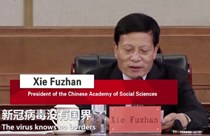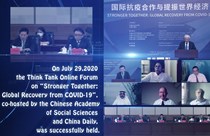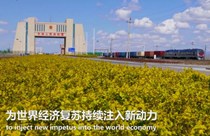Security strategy in China’s new Asian diplomacy
Author : Xu Qingchao Source : Chinese Social Sciences Today 2014-07-31
Despite its ever-growing economy, China’s national security has been facing unprecedented pressure and great challenges in recent years. This has become an outstanding problem that current Chinese diplomacy must tackle.
On the one hand, the 2008 global financial crisis led to a sharp contrast between hard-hit Western countries and rising emerging powers, reflecting the changing global political and economic pattern. China, as the world economic engine, not only weathered the financial crisis but became the second-largest economy in the world upon surpassing Japan in 2010.
On the other hand, the Western “China Responsibility Theory” has posed a series of major tests to China’s national security. Events such as the 2010 collision between a Chinese fishing boat and a Japanese coast guard vessel near the Diaoyu Islands, the 2012 Huangyan Island standoff between the Chinese and Philippine navies, domestic terrorist attacks and the deadly May 2014 anti-China riots in Vietnam indicate that China’s sovereignty, security and development interests face great challenges. In the current situation of the US’ pivot to Asia, Russia’s resurgence, Japan’s national normalization and emerging powers’ rise, China’s geographical pattern is developing in the direction of multi-polarization, making the task of safeguarding security interests more arduous.
Since its reform and opening-up, China’s diplomacy has aimed to create a favorable external environment for domestic economic development. China has established formal diplomatic relations with 172 countries and plays an increasingly important role in various international communities. However, in recent years it has faced many security challenges. With domestic issues internationalized and bilateral issues multilateralized, China’s diplomacy needs adjustment and change.
While confronting unprecedented disputes and conflicts in neighboring diplomacy, China is actively exploring great-power diplomacy with Chinese characteristics. Ideas of upholding peace, development and win-win cooperation, persisting in building a good-neighborly relationship and partnership with its neighbors, and self-development to benefit Asian countries are important components of China’s new Asian diplomacy.
“New Asia” stands for the goal of China’s neighboring diplomacy to forge the upgraded version of China-ASEAN Free Trade Area through the construction of the Silk Road Economic Belt and 21st Century Maritime Silk Road. Different from China’s traditional diplomacy, this new form of diplomacy aims to expand and deepen pragmatic cooperation in the realm of security and propose a common, comprehensive, cooperative and sustainable security concept for Asia.
In recent years, there have been many discussions in the West on China’s new Asian diplomacy, among which some scholars equate it with the US’ Monroe Doctrine in 1823 or Japan’s “Greater East Asia Co-prosperity Sphere” in the 1940s.
But China’s new Asian diplomacy is entirely different from the Monroe Doctrine, which delimited its sphere of influence in Latin America, and Japan’s “Greater East Asia Co-prosperity Sphere,” which served its continental policy presenting colonial aggression. China instead aims to deepen economic and security cooperation on the basis of peace and opening-up, promote the common development of Asian countries and eventually achieve Asia-wide prosperity, peace and stability.
The new Asian diplomacy represents a new measure of China’s conformity to changing situations at home and abroad. It is a new diplomatic concept applying equal weight on security and the economy, and a new plan of adherence to the path of peace and development.
The author is an assistant research fellow at the Institute of China Studies at the Shanghai Academy of Social Sciences.
The Chinese version appeared in Chinese Social Sciences Today, No. 622, July 18, 2014.
The Chinese link: http://sscp.cssn.cn/zdtj/201407/t20140718_1258799.html
Translated by Yu Hui
Revised by Tom Fearon
Ye Shengtao made Chinese fairy tales from a wilderness
Ye Shengtao (1894–1988) created the first collection of fairy tales in the history of Chinese children’s literature...
-
How northern ethnicities integrated into Chinese nation
2023-09-18
-
Mogao caves
2023-09-12
-
Mogao Grottoes as ‘a place of pilgrimage’
2023-09-12
-
Time-honored architectural traditions in China
2023-08-29
-
Disentangling the civilizational evolution of China
2023-08-28
-
AI ethics in science fiction
2023-08-23














 2011-2013 by www.cssn.cn. All Rights Reserved
2011-2013 by www.cssn.cn. All Rights Reserved